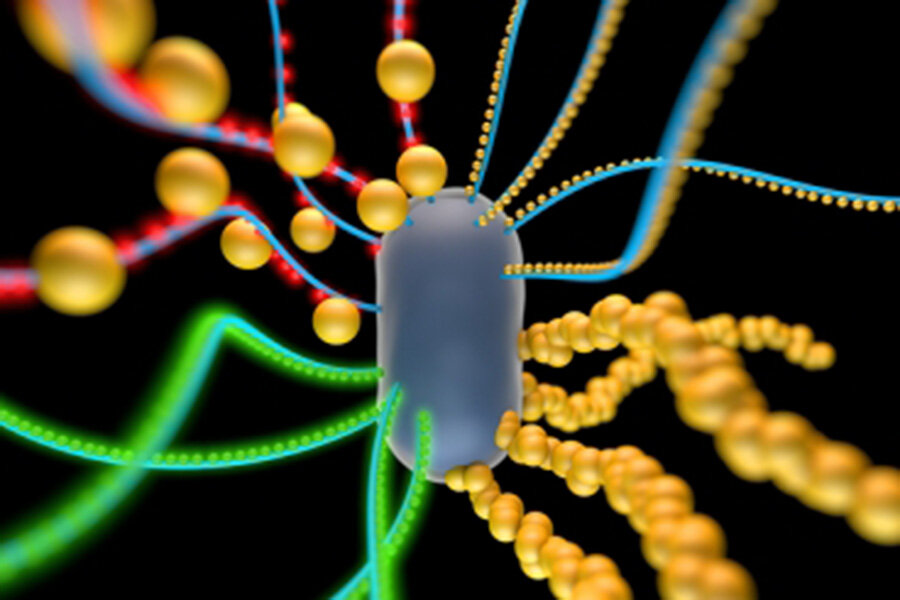MIT scientists engineer 'cells that talk to each other'
Loading...
The living and the non-living worlds are not so incompatible after all.
A group of researchers have now designed “living materials” by incorporating red and green quantum dots (nanocrystals made from semiconducting materials) and gold nanoparticles within E. coli biofilms.
The findings of the study were published in a paper titled "Synthesis and patterning of tunable multiscale materials with engineered cells" in the journal Nature Materials.
E.coli, a bacteria that resides in the guts of warm-blooded animals, produces biofilms containing protein-rich “curli fibers” that help them cling to each other on a surface. Each curli fiber consists of a repeating chain of identical protein subunits called CsgA. The CsgA units can be modified by peptides (fragments of protein that are expressed when small molecules such as AHL or aTc are added to the cells) and these peptides are capable of capturing nonliving materials, such as nanoparticles.
The idea is to get the a bacterial cell to produce curli fibers only when it receives certain set of instructions, Timothy Lu, an assistant professor of electrical engineering and biological engineering and the senior author of a paper told the Monitor.
To achieve this, the team of researchers modified the DNA of the E. coli cell in a way that they could no longer produce curli fibers naturally. They then inserted engineered genetic circuits within the E. coli in a way that ensured that the production of certain curli fibers was activated only in the presence of AHL or aTc. This way, scientists could adjust the amount of AHL or aTc and control the production of specific curli fibers, says Dr. Lu.
Researchers also demonstrated the ability of 'cells to talk to each other' by mixing two different colonies of bacterial cells.
The researchers modified E. coli to produce AHL within “sender cells," which was then transmitted to “receiver cells” to activate formation of curli fibers. So by mixing sender cells and receiver cells, the bacterial cells would make different materials at different times, as the AHL built up.
“It’s a really simple system but what happens over time is you get curli that’s increasingly labeled by gold particles. It shows that indeed you can make cells that talk to each other and they can change the composition of the material over time,” Lu said in a press release. “The combined cells along with the nano materials are capable of conducting electricity or emitting light. Thus, its the hybrid of the living and non-living materials that has the novel materials properties," he adds.
Using this technique, researchers hope to emulate how natural systems, like bone, form. "No one tells bone what to do, but it generates a material in response to environmental signals," says Lu. “Our idea is to put the living and the nonliving worlds together to make hybrid materials that have living cells in them and are functional."








